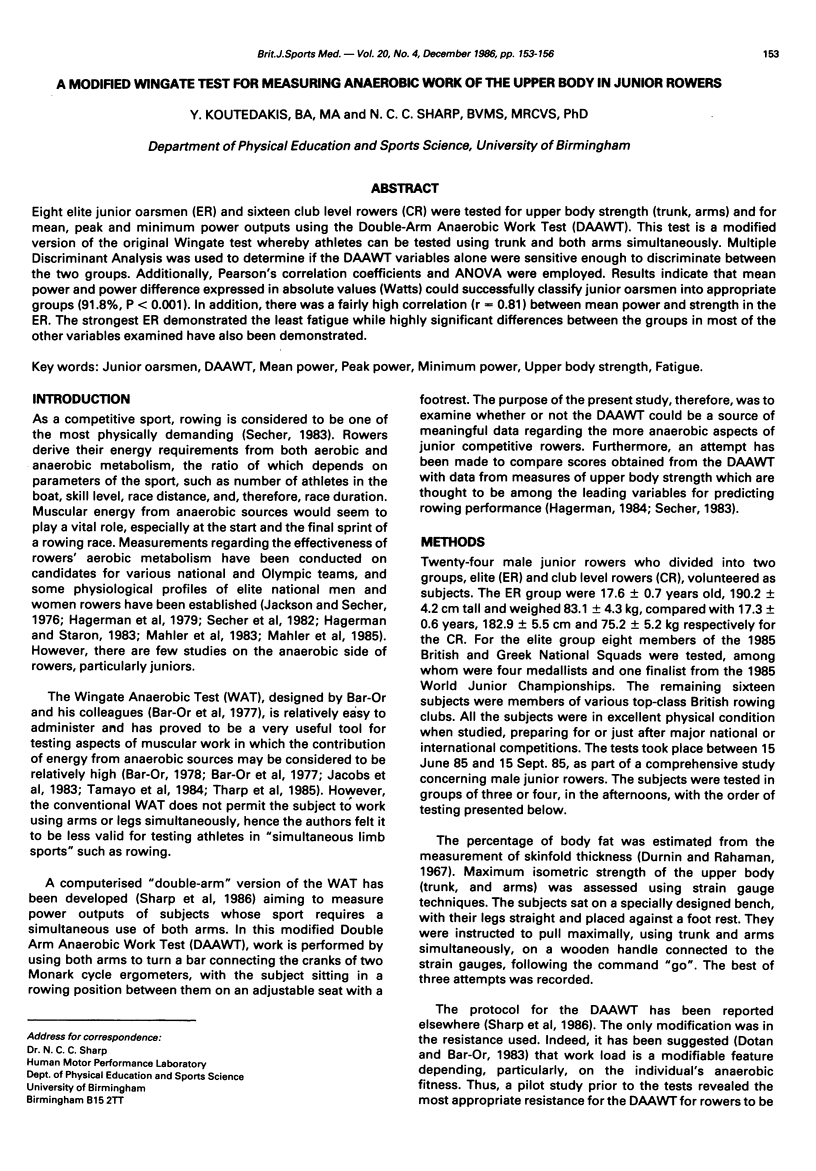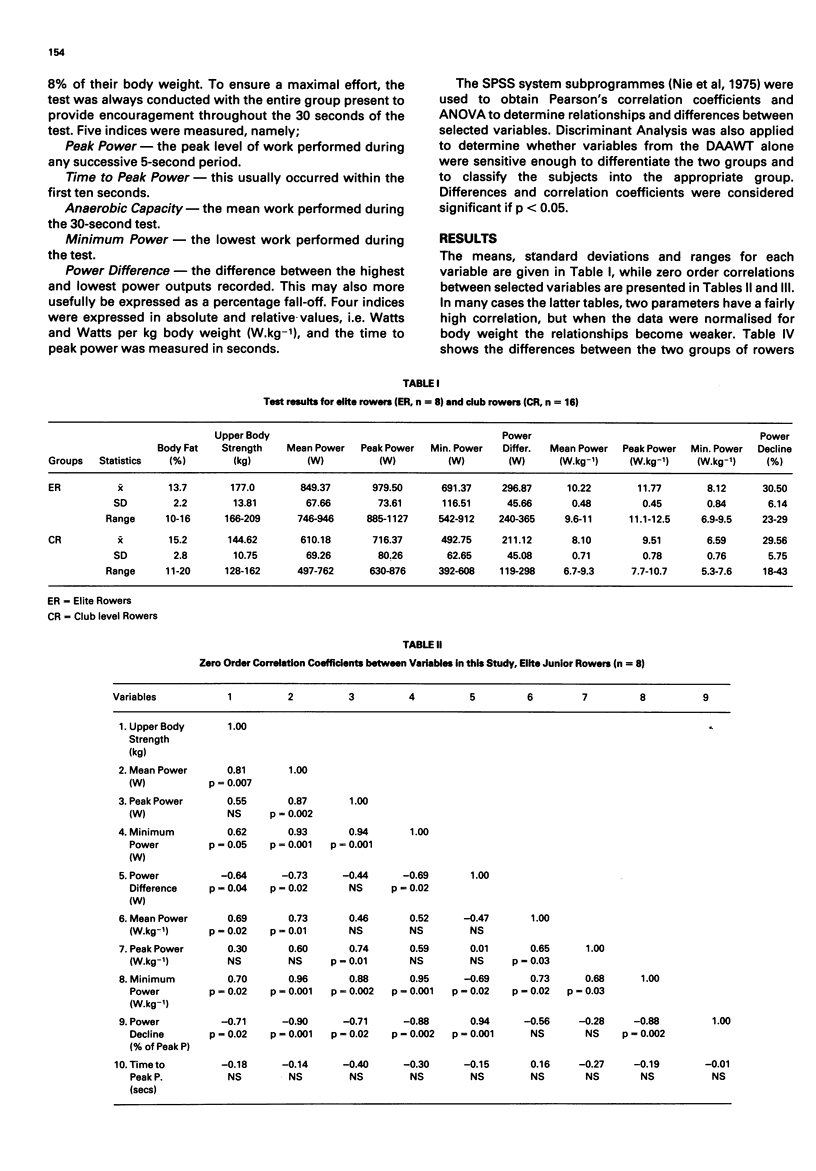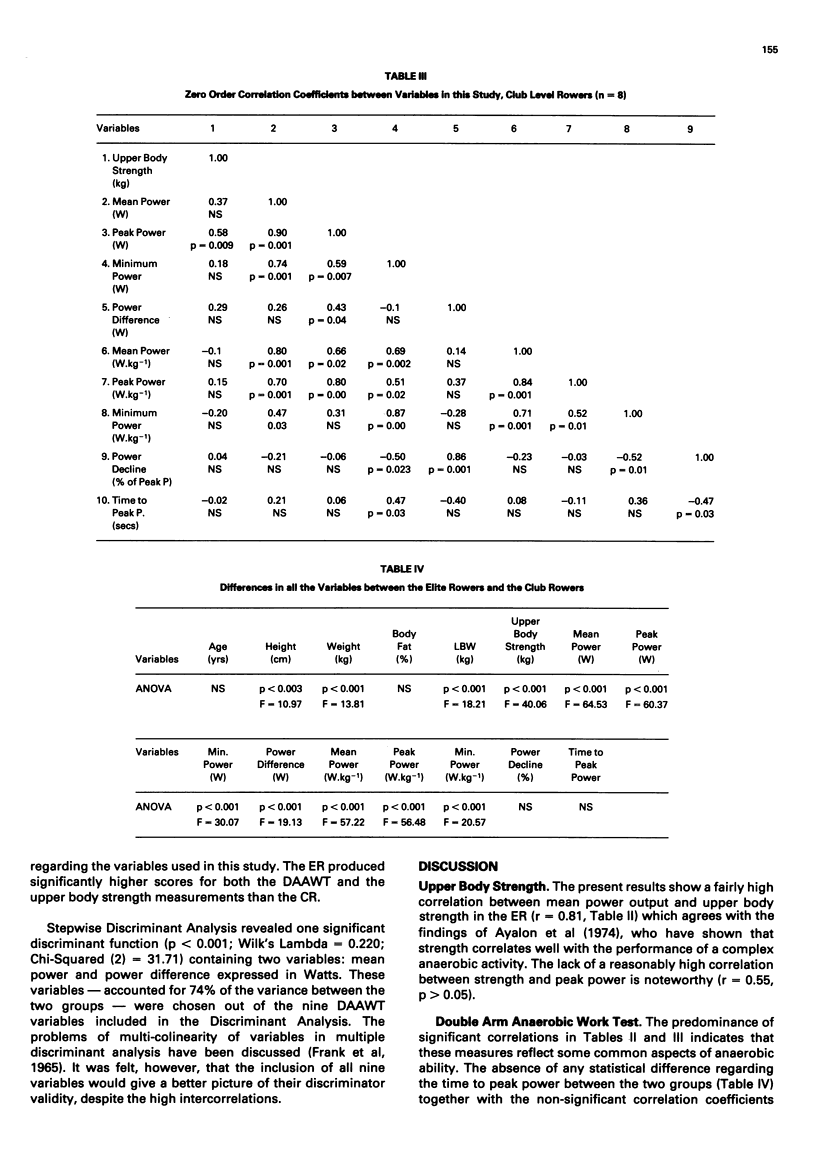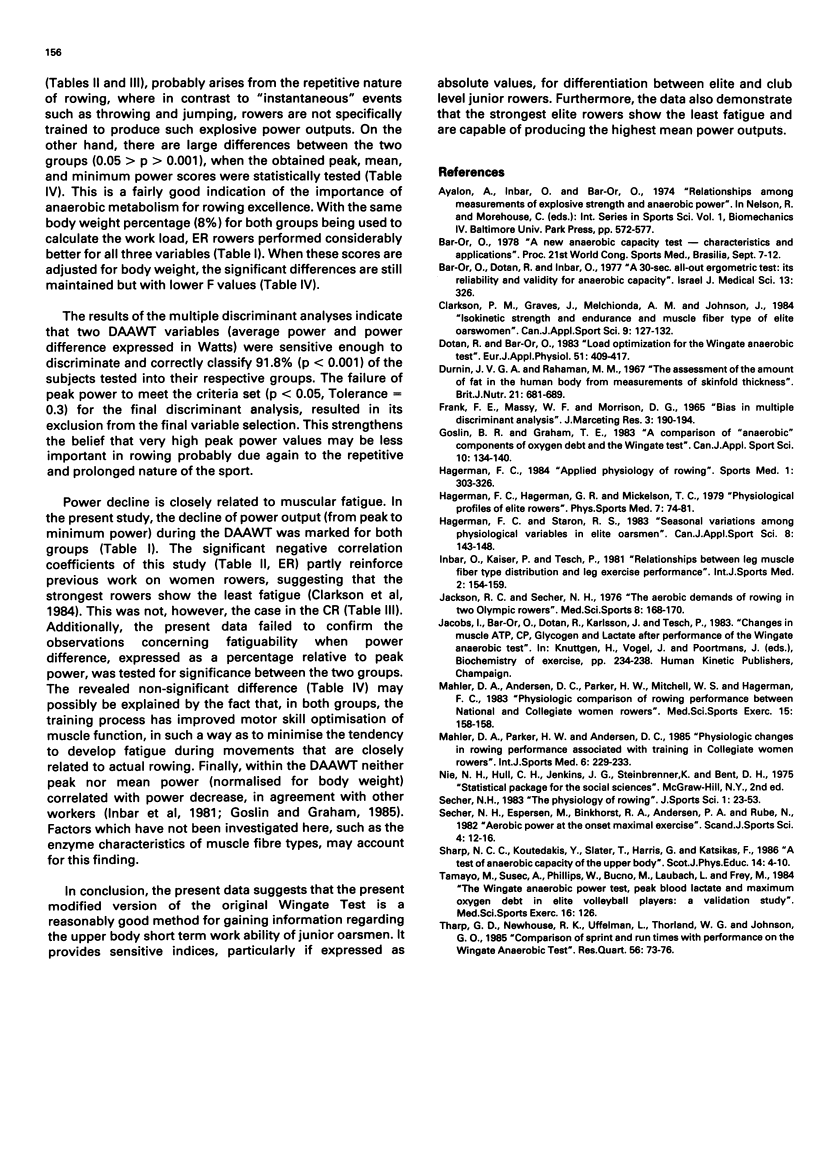Abstract
Eight elite junior oarsmen (ER) and sixteen club level rowers (CR) were tested for upper body strength (trunk, arms) and for mean, peak and minimum power outputs using the Double-Arm Anaerobic Work Test (DAAWT). This test is a modified version of the original Wingate test whereby athletes can be tested using trunk and both arms simultaneously. Multiple Discriminant Analysis was used to determine if the DAAWT variables alone were sensitive enough to discriminate between the two groups. Additionally, Pearson's correlation coefficients and ANOVA were employed. Results indicate that mean power and power difference expressed in absolute values (Watts) could successfully classify junior oarsmen into appropriate groups (91.8%, P less than 0.001). In addition, there was a fairly high correlation (r = 0.81) between mean power and strength in the ER. The strongest ER demonstrated the least fatigue while highly significant differences between the groups in most of the other variables examined have also been demonstrated.
Full text
PDF



Selected References
These references are in PubMed. This may not be the complete list of references from this article.
- Clarkson P. M., Graves J., Melchionda A. M., Johnson J. Isokinetic strength and endurance and muscle fiber type of elite oarswomen. Can J Appl Sport Sci. 1984 Sep;9(3):127–132. [PubMed] [Google Scholar]
- Dotan R., Bar-Or O. Load optimization for the Wingate Anaerobic Test. Eur J Appl Physiol Occup Physiol. 1983;51(3):409–417. doi: 10.1007/BF00429077. [DOI] [PubMed] [Google Scholar]
- Durnin J. V., Rahaman M. M. The assessment of the amount of fat in the human body from measurements of skinfold thickness. Br J Nutr. 1967 Aug;21(3):681–689. doi: 10.1079/bjn19670070. [DOI] [PubMed] [Google Scholar]
- Goslin B. R., Graham T. E. A comparison of 'anaerobic' components of O2 debt and the Wingate test. Can J Appl Sport Sci. 1985 Sep;10(3):134–140. [PubMed] [Google Scholar]
- Hagerman F. C. Applied physiology of rowing. Sports Med. 1984 Jul-Aug;1(4):303–326. doi: 10.2165/00007256-198401040-00005. [DOI] [PubMed] [Google Scholar]
- Hagerman F. C., Staron R. S. Seasonal variables among physiological variables in elite oarsmen. Can J Appl Sport Sci. 1983 Sep;8(3):143–148. [PubMed] [Google Scholar]
- Inbar O., Kaiser P., Tesch P. Relationships between leg muscle fiber type distribution and leg exercise performance. Int J Sports Med. 1981 Aug;2(3):154–159. doi: 10.1055/s-2008-1034603. [DOI] [PubMed] [Google Scholar]
- Jackson R. C., Secher N. H. The aerobic demands of rowing in two Olympic rowers. Med Sci Sports. 1976 Fall;8(3):168–170. doi: 10.1249/00005768-197600830-00006. [DOI] [PubMed] [Google Scholar]
- Mahler D. A., Parker H. W., Andresen D. C. Physiologic changes in rowing performance associated with training in collegiate women rowers. Int J Sports Med. 1985 Aug;6(4):229–233. doi: 10.1055/s-2008-1025846. [DOI] [PubMed] [Google Scholar]


